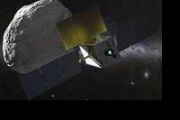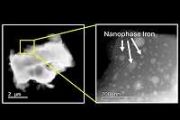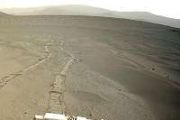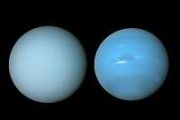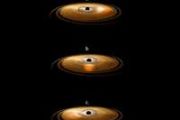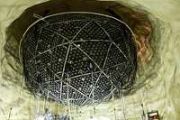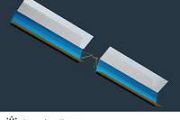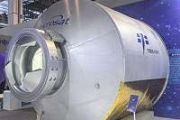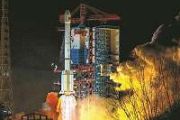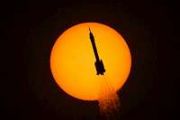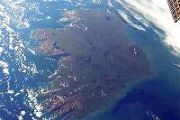
Copernical Team
Virgin Orbit launches 'Straight Up' mission for US Space Force
 Virgin Orbit (Nasdaq: VORB) has confirmed the success of its fourth consecutive satellite launch mission. This launch, named Straight Up, carried seven satellites to Low Earth Orbit for the United States Space Force (USSF), who procured this launch for the Rocket Systems Launch Program, with payloads provided by the Department of Defense Space Test Program (STP). In support of its mission partne
Virgin Orbit (Nasdaq: VORB) has confirmed the success of its fourth consecutive satellite launch mission. This launch, named Straight Up, carried seven satellites to Low Earth Orbit for the United States Space Force (USSF), who procured this launch for the Rocket Systems Launch Program, with payloads provided by the Department of Defense Space Test Program (STP). In support of its mission partne NTU Singapore successfully launches its 10th satellite into space
 Singapore's latest satellite, designed and built by students from Nanyang Technological University, Singapore (NTU Singapore), is now successfully orbiting around Earth, having launched yesterday (30 Jun 2022) on an Indian Space Research Organisation Polar Satellite Launch Vehicle.
The latest NTU satellite, named SCOOB-I, is the first of the new Student Satellite Series (S3-I) to be launch
Singapore's latest satellite, designed and built by students from Nanyang Technological University, Singapore (NTU Singapore), is now successfully orbiting around Earth, having launched yesterday (30 Jun 2022) on an Indian Space Research Organisation Polar Satellite Launch Vehicle.
The latest NTU satellite, named SCOOB-I, is the first of the new Student Satellite Series (S3-I) to be launch Terran Orbital completes NASA Pathfinder TD 3 bus commissioning
 Terran Orbital Corporation (NYSE: LLAP) reports that its Pathfinder Technology Demonstrator 3 (PTD-3) satellite has completed bus commissioning with all health and status checkouts nominal. Terran Orbital designed and built the PTD-3 satellite in support of NASA's PTD series of missions.
The missions will test the operation of a variety of novel small satellite technologies in low-Earth or
Terran Orbital Corporation (NYSE: LLAP) reports that its Pathfinder Technology Demonstrator 3 (PTD-3) satellite has completed bus commissioning with all health and status checkouts nominal. Terran Orbital designed and built the PTD-3 satellite in support of NASA's PTD series of missions.
The missions will test the operation of a variety of novel small satellite technologies in low-Earth or Teleglobal and Kacific complete large-scale deployment of mobile backhaul services
 Kacific Broadband Satellites Group (Kacific) has successfully partnered with PT Indo Pratama Teleglobal ("Teleglobal") in Indonesia to provide a large-scale deployment of mobile backhaul services to major telecommunications operators.
Over the last year, the pair have connected hundreds of base sites across the Indonesian territory, capable of 4G services, to Kacific's high-throughput Ka-b
Kacific Broadband Satellites Group (Kacific) has successfully partnered with PT Indo Pratama Teleglobal ("Teleglobal") in Indonesia to provide a large-scale deployment of mobile backhaul services to major telecommunications operators.
Over the last year, the pair have connected hundreds of base sites across the Indonesian territory, capable of 4G services, to Kacific's high-throughput Ka-b Turion Space and Exolaunch announce launch agreement for DROID 001 aboard Falcon 9
 US Company Turion Space, building spacecraft for space logistics services including space debris removal and space situational awareness data, has selected Exolaunch, a global provider of launch, deployment and integration services for small satellites, to provide launch services for their first DROID spacecraft aboard a Falcon 9 Transporter rideshare mission.
The launch is planned for ear
US Company Turion Space, building spacecraft for space logistics services including space debris removal and space situational awareness data, has selected Exolaunch, a global provider of launch, deployment and integration services for small satellites, to provide launch services for their first DROID spacecraft aboard a Falcon 9 Transporter rideshare mission.
The launch is planned for ear Shedding light on comet Chury's unexpected chemical complexity
 A team of researchers led by the University of Bern has for the first time identified an unexpected richness of complex organic molecules at a comet. This was achieved thanks to the analysis of data collected during ESA's Rosetta mission at comet 67P/ChuryumovGerasimenko, also known as Chury. Delivered to the early Earth by impacting comets, these organics may have helped to kick-start carbon-ba
A team of researchers led by the University of Bern has for the first time identified an unexpected richness of complex organic molecules at a comet. This was achieved thanks to the analysis of data collected during ESA's Rosetta mission at comet 67P/ChuryumovGerasimenko, also known as Chury. Delivered to the early Earth by impacting comets, these organics may have helped to kick-start carbon-ba Rocket Lab Moon Mission for NASA a Success
 Rocket Lab USA, Inc. (Nasdaq: RKLB) has successfully deployed a pathfinding satellite for NASA, setting it on a course to the Moon. The deployment marks the successful completion of Rocket Lab's first deep space mission, paving the way for the Company's upcoming interplanetary missions to Mars and Venus.
Owned and operated by Advanced Space on behalf of NASA, the Cislunar Autonomous Positi
Rocket Lab USA, Inc. (Nasdaq: RKLB) has successfully deployed a pathfinding satellite for NASA, setting it on a course to the Moon. The deployment marks the successful completion of Rocket Lab's first deep space mission, paving the way for the Company's upcoming interplanetary missions to Mars and Venus.
Owned and operated by Advanced Space on behalf of NASA, the Cislunar Autonomous Positi Kongsberg to acquire NanoAvionics; AST SpaceMobile sells stake
 Kongsberg Defence and Aerospace (Kongsberg) has entered into an agreement to acquire Lithuanian smallsat mission integrator and bus manufacturer NanoAvionics. The planned acquisition expands Kongsberg's space offering to also have products and technology for manufacturing small satellites.
NanoAvionics is a leading smallsat mission integrator and bus manufacturer with significant global gr
Kongsberg Defence and Aerospace (Kongsberg) has entered into an agreement to acquire Lithuanian smallsat mission integrator and bus manufacturer NanoAvionics. The planned acquisition expands Kongsberg's space offering to also have products and technology for manufacturing small satellites.
NanoAvionics is a leading smallsat mission integrator and bus manufacturer with significant global gr Earth orbit, Moon, Mars: ESA’s ambitious roadmap
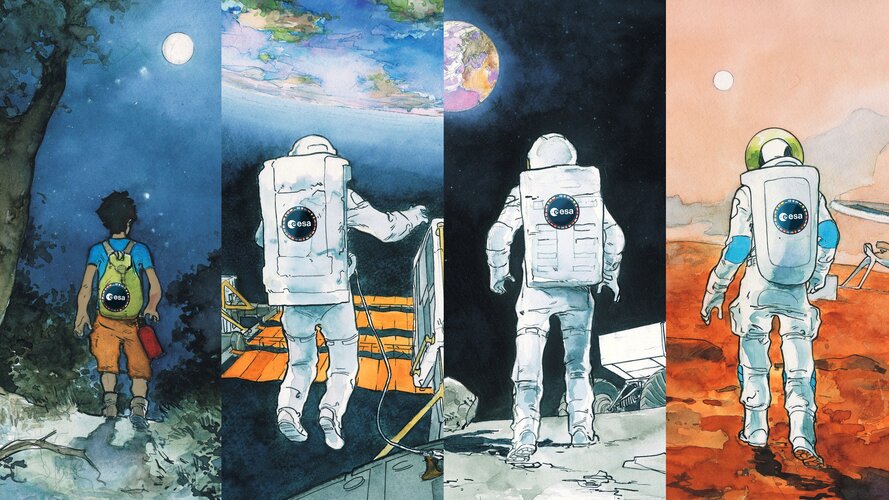
NASA satellite breaks from orbit around Earth, heads to moon

A satellite the size of a microwave oven successfully broke free from its orbit around Earth on Monday and is headed toward the moon, the latest step in NASA's plan to land astronauts on the lunar surface again.






